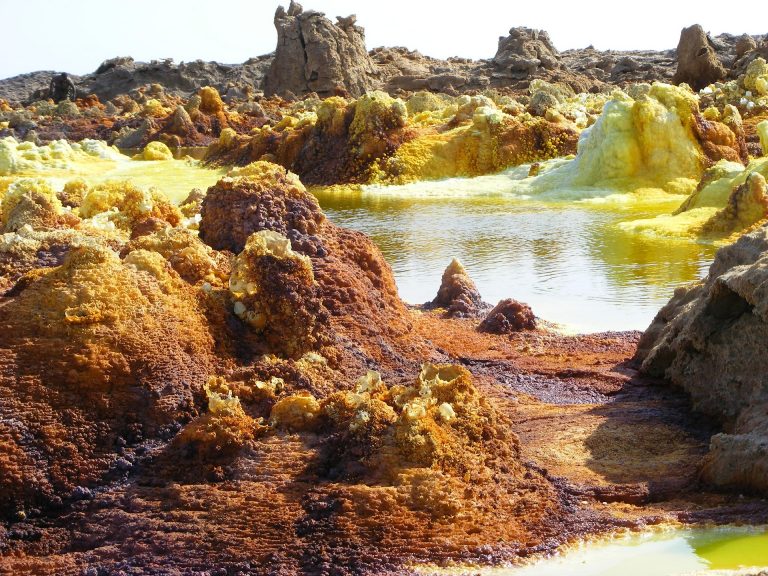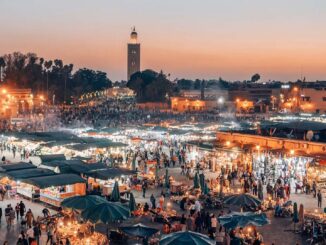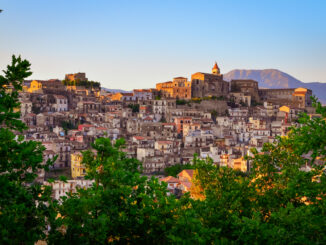
As we have already seen, our planet is rich in places where it is difficult to live and survive. Yet, there is one place that may rank as the most inhospitable in the world. The Ethiopians, who guard and live near this amazing treasure, know this very well.
Dallol – The Most Fascinating and Inhospitable Place Belongs to the Ethiopians
It is a place where life is not possible. The acidic lakes that bubble up in the desert of Dankalia, Ethiopia, are one of the most beautiful places in the whole of Africa.
The yellow color with shades ranging from green to brown gives it a terrifying but at the same time fascinating appearance. Not even researchers and scientists have resisted this fascination. In fact, they believed that those acid pools born on the crater of the volcano could be home to living organisms. However, this is not the case.
There are extremophilic microorganisms, i.e. those capable of surviving and proliferating under environmental conditions that are prohibitive for humans. For example, they can live in extremely high or low conditions of temperature, pressure, pH and salinity. The only place where they cannot live, however, is in the waters of the hydrothermal region of Dallol. This was confirmed by the team of the Cnrs of Paris led by Purificacion Lopez-Garcia. The researchers were curious to know if even the depression of Dancalia, a salt deposit left by the Red Sea in the Horn of Africa, was inhabited by some creature.
In Search of the Most Inhospitable Place in the World
However, it seems that there is a limit to everything. And the conditions that distinguish this treasure of geology go beyond the limits of life on our planet. Water has an almost oily appearance – it looks like a warm brine. There are also mountains of sulphur, salt cones, small gaseous geysers, tanks of acids isolated by frames of crystals. Finally, there are chimneys of sulphur, magnesium chloride and soda, from which toxic fumes and incandescent jets emerge.
Despite collecting numerous samples, the researchers have not found any type of DNA there. As a result, they collected no evidence of any living organisms. In the less extreme ponds, they found traces of microbes and other organisms. However, it was not possible to determine whether they were alive or in any way active. This lack of confirmation supports the thesis that this is the least hospitable place on the planet.








